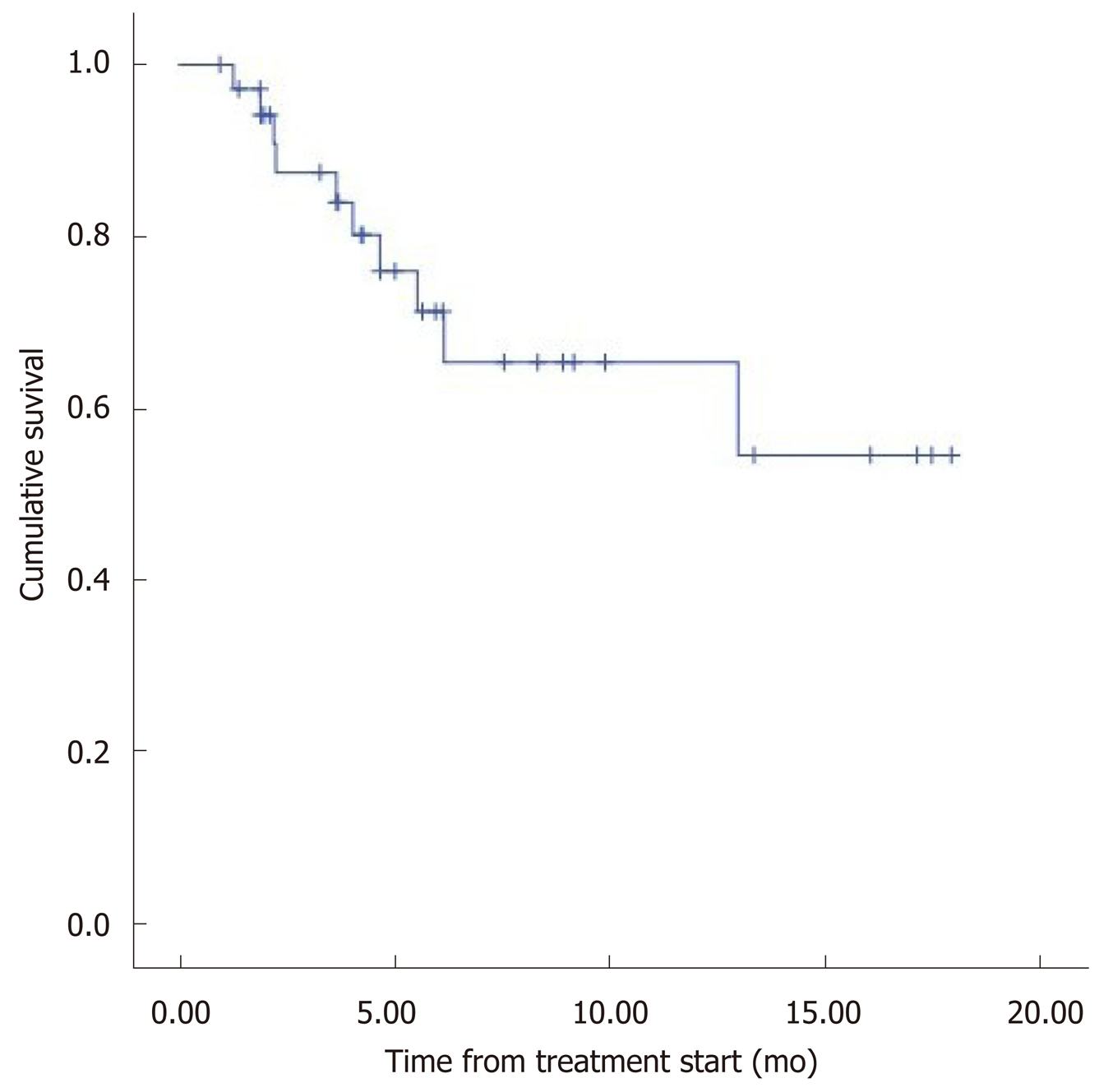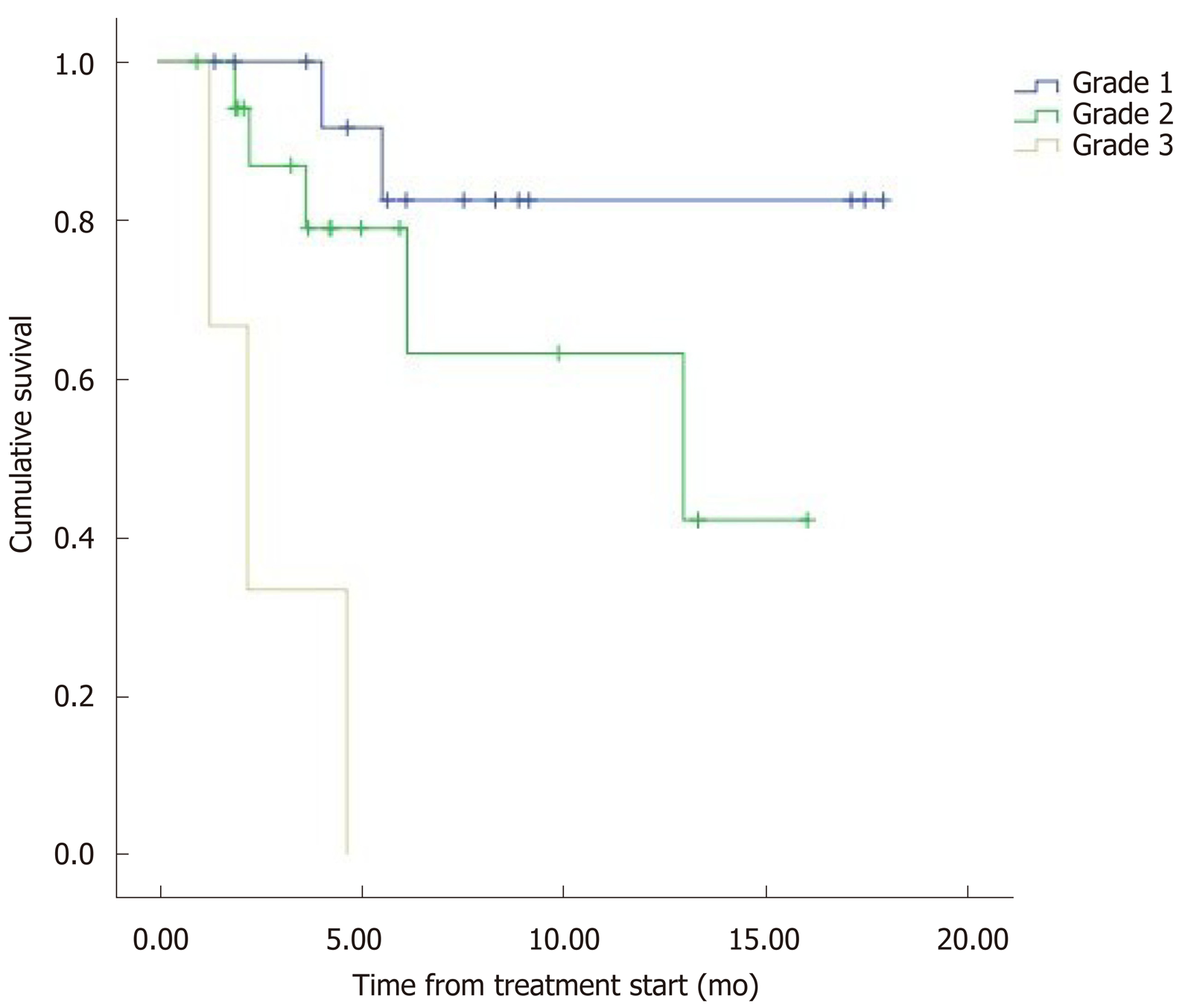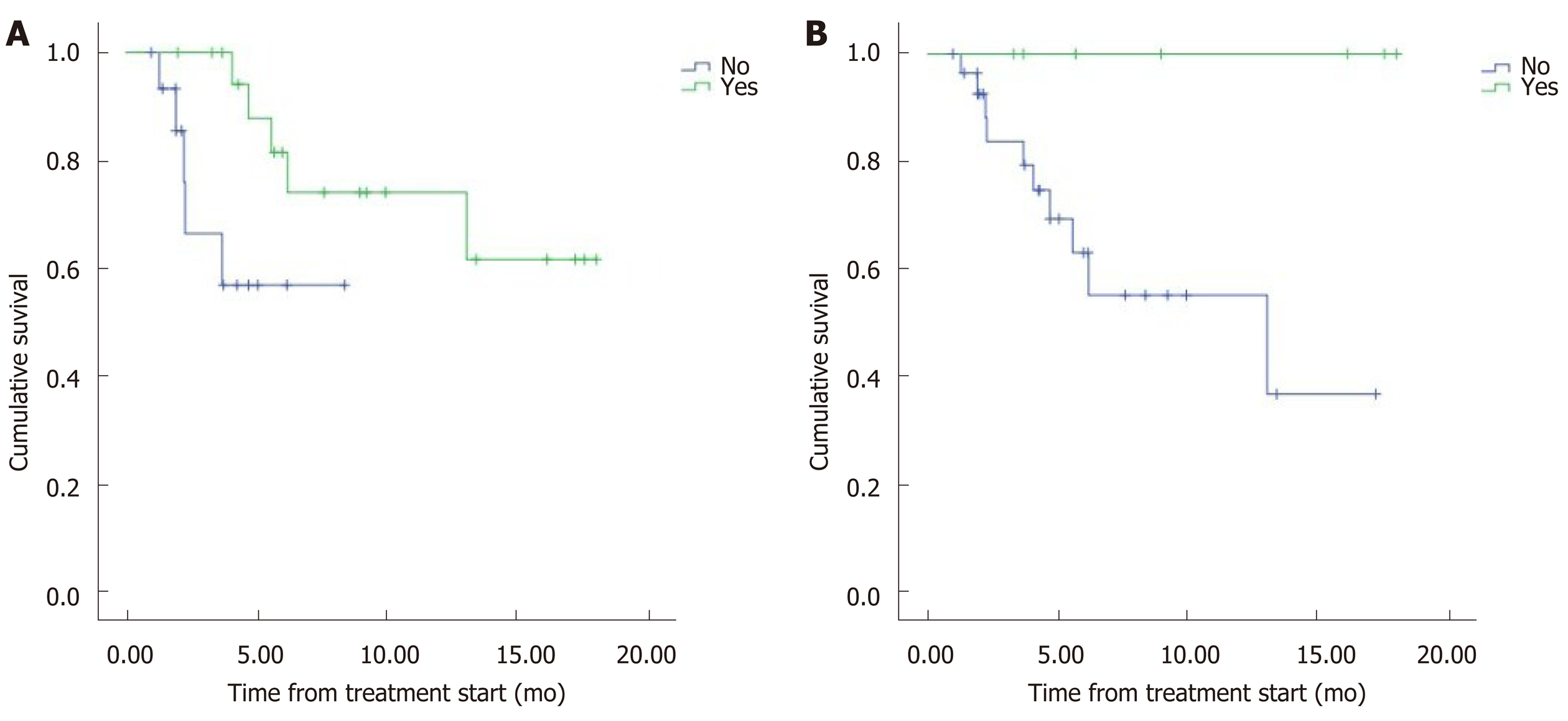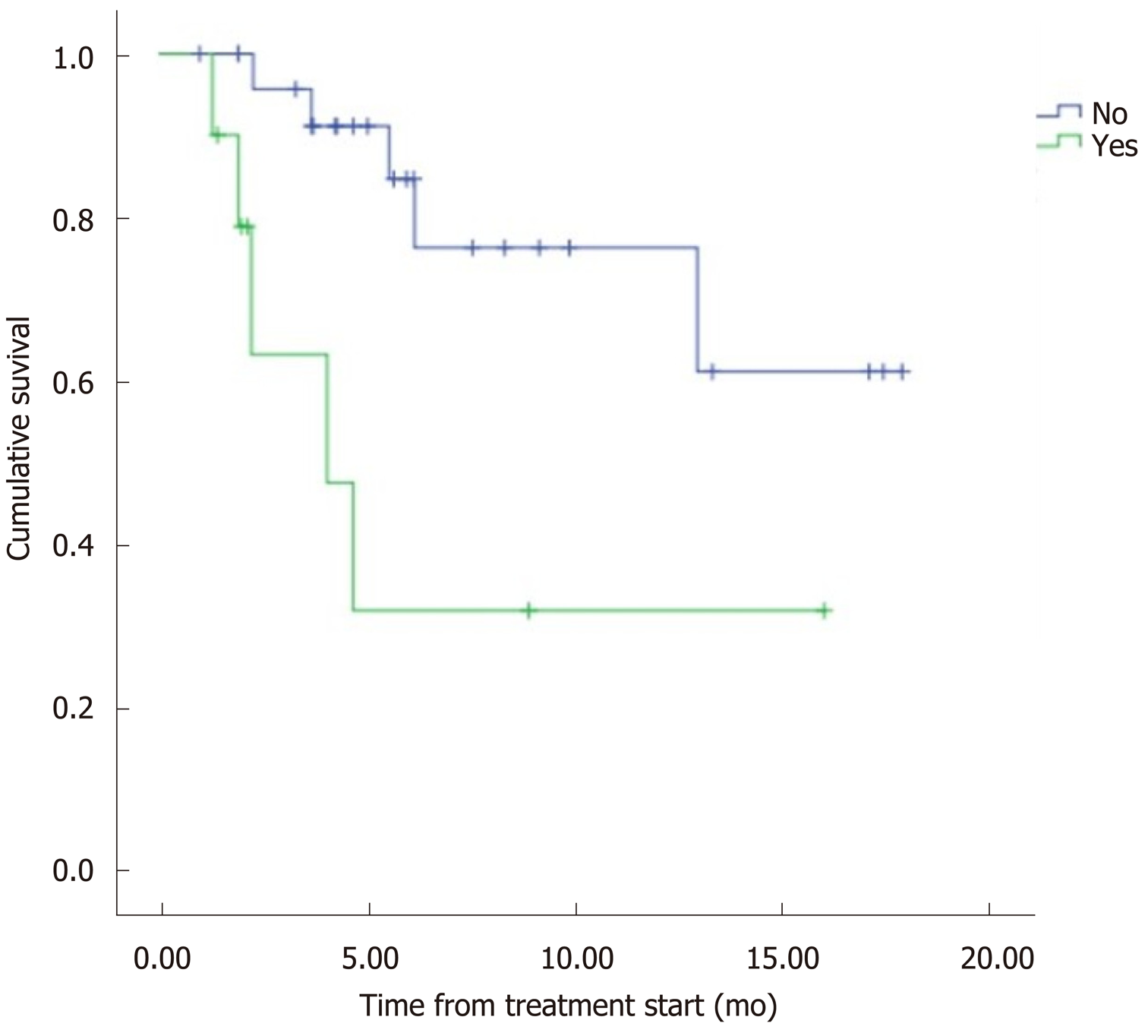Copyright
©The Author(s) 2020.
World J Gastroenterol. Apr 7, 2020; 26(13): 1513-1524
Published online Apr 7, 2020. doi: 10.3748/wjg.v26.i13.1513
Published online Apr 7, 2020. doi: 10.3748/wjg.v26.i13.1513
Figure 1 Graphical representation of overall survival in patients diagnosed with neuroendocrine tumors treated with peptide receptor radionuclide therapy.
A median survival of 12.5 mo is shown (95% confidence interval: 9.8–15.2).
Figure 2 Representation of cumulative survival in the population studied according to the histological tumor grade.
Grade 1 (blue), grade 2 (green) and grade 3 (gray) demonstrating that overall survival is inversely proportional to tumor grade.
Figure 3 Representation of cumulative survival in patients treated with primary tumor surgery and metastases with peptide receptor radionuclide therapy (green) and patients treated only with peptide receptor radionuclide therapy (blue).
A: For patients treated with primary tumor surgery, the probability of long-term survival is higher when treated with peptide receptor radionuclide therapy, showing the existence of a directly proportional relationship between survival and surgical treatment; B: The patients treated with metastases.
Figure 4 Representation of cumulative survival in patients with (green) and without (blue) bone metastasis.
The probability of long-term survival is higher in the second group.
- Citation: Abou Jokh Casas E, Pubul Núñez V, Anido-Herranz U, del Carmen Mallón Araujo M, del Carmen Pombo Pasín M, Garrido Pumar M, Cabezas Agrícola JM, Cameselle-Teijeiro JM, Hilal A, Ruibal Morell Á. Evaluation of 177Lu-Dotatate treatment in patients with metastatic neuroendocrine tumors and prognostic factors. World J Gastroenterol 2020; 26(13): 1513-1524
- URL: https://www.wjgnet.com/1007-9327/full/v26/i13/1513.htm
- DOI: https://dx.doi.org/10.3748/wjg.v26.i13.1513












